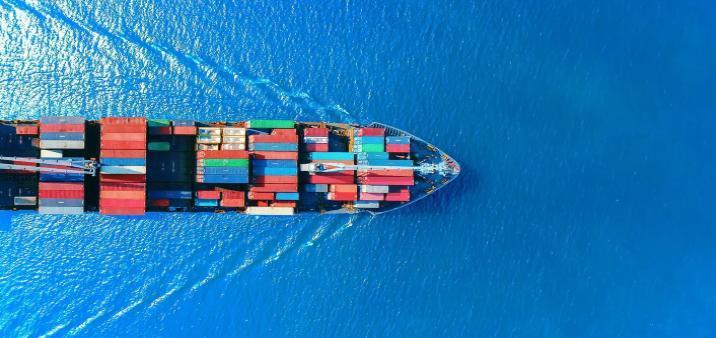Hydrogen and hydrogen derivative fuels are expected to play a vital role in enabling the decarbonisation of shipping and maritime activities.
Many projects are underway seeking to develop hydrogen fuel cell systems to provide both auxiliary and propulsive power for vessels at a range of scales, with strong engagement from ship designers, ship builders, owners and operators, as well as fuel cell developers. However, these organisations may not be well placed to develop the understanding of technical and societal parts of bunkering infrastructure deployment required to facilitate market uptake of hydrogen-fuelled solutions. This action will address that gap.
This topic aims to contribute to setting standards for future inherently safer hydrogen bunkering for inland shipping, and for short-distance sea-going maritime applications, including in island contexts. Developing these solutions is of vital importance to facilitating further innovation activity in deploying hydrogen solutions in shipping, as well as in de-risking future investments.
Project results are expected to contribute to, but not limited to, the following expected outcomes:
- Improved understanding of the health and safety requirements for hydrogen bunkering in a range of operational shipping contexts, which will make bunkering more efficient and inherently safer to reduce hazards and consequences of potential incidents, and thus de-risk future developments;
- Closed knowledge gaps on characteristic hazards and associated risks;
- Lessons learned which can inform heavy-duty refuelling development for other sectors, to facilitate further deployment of hydrogen in a wide range of transport and freight sectors;
- Identification of regulatory challenges and barriers, and areas of focus for pre-normative research and regulatory reform, in order to unlock future fuelling of heavy-duty applications;
- Guidelines and/or draft standards for hydrogen bunkering components and systems to increase the coherence of innovation activities and improve uptake throughout Europe and beyond;
- Leveraging the opportunities associated with shipping as an off-take sector in the development of business cases for hydrogen storage and distribution networks.
- Improved understanding of requirements for type approval for both ship-to-shore and ship-to-ship interfaces and control systems to facilitate widespread commercialisation of the solutions;
- Deployment of hydrogen bunkering infrastructure of at least 800 kg H2/day capacity in project locations;
- A boost in the uptake of hydrogen-fuelled vessels, and associated commercialisation benefits for the broader hydrogen economy;
- Training for vessel crew and bunker terminal personnel, which can be replicated.
It is expected that scalable bunkering solutions will best be developed through the demonstration of innovative systems which can deliver hydrogen to vessels safely, quickly and at low cost. The technical development for these solutions should be accompanied by work to understand the underlying physical phenomena, develop health and safety practices, satisfy existing and suggest new regulatory requirements as needed, deliver appropriate classification of the solutions developed, and facilitate wide roll out of the solution. Previous desk-based studies have proposed the development of a corridor of hydrogen bunkering hubs at key connecting ports across Europe, and it is expected that this initiative will be tied to a location with developed offtake for compressed hydrogen gas. To realise these ambitions, standardisation of the developed engineering solutions, including components such as refueller, connections, nozzles, as well as of fuelling protocols, is also a key priority.
There are a number of different approaches to developing appropriate bunkering solutions, which will be more or less relevant according to local requirements. Maximum impact for the action will be secured by tying the solution developed to a local need, to enhance the commercial case for the adoption of the solutions developed.
To ensure that the solutions developed address the full range of challenges foreseen, the action should focus on one of two distinct focus areas:
- A pipe-to-ship stationary refuelling solution which is multi-modal, in that it can address refuelling requirements for a range of vehicles including trains and trucks, as well as account for refuelling for shore-to-ship power. The infrastructure and fuelling protocols should be designed for simultaneous bunkering operations and should be able to scale in future;
- A floating ship-to-ship or platform-to-ship bunkering system and protocol, to facilitate efficient hydrogen delivery without the need for vessels to visit a port or stationary refuelling station, as well as to provide resilience and redundancy. If this focus area is selected, then the successful project should cooperate with the successful project of HORIZON-JTI-CLEANH2-2022-03-05, working on the barge-to-barge bunkering.
Proposals should also:
- Demonstrate a smart and safe logistics solutions and develop a market standard to support front-running shipping projects;
- Evaluate the proposed solutions from technical and economic points of view, including robustly considering business models and the cost of hydrogen delivered;
- Address health, safety and environmental considerations, and should take account of standards in development internationally;
- Specifically, build upon existing blueprints deriving from liquified natural gas protocols and international standards developed for those. To this end project consortia should seek to involve key sector stakeholders, such as port authorities, classification societies, ship designers, ship owners and specifically international organisation such as the Society of International Gas Tanker and Terminal Operators (SIGTTO), the International Association of Ports and Harbours (IAPH) and the Society for Gas as a Marine Fuel (SGMF).
Link with CMA Goals
Goal II: A competitive, innovative and sustainable blue economy for the Black Sea / Priority 2: Promote transport and digital connectivity of the Black Sea

